
Mali Garnet Gemstone: Properties Meanings, Price & Benefits
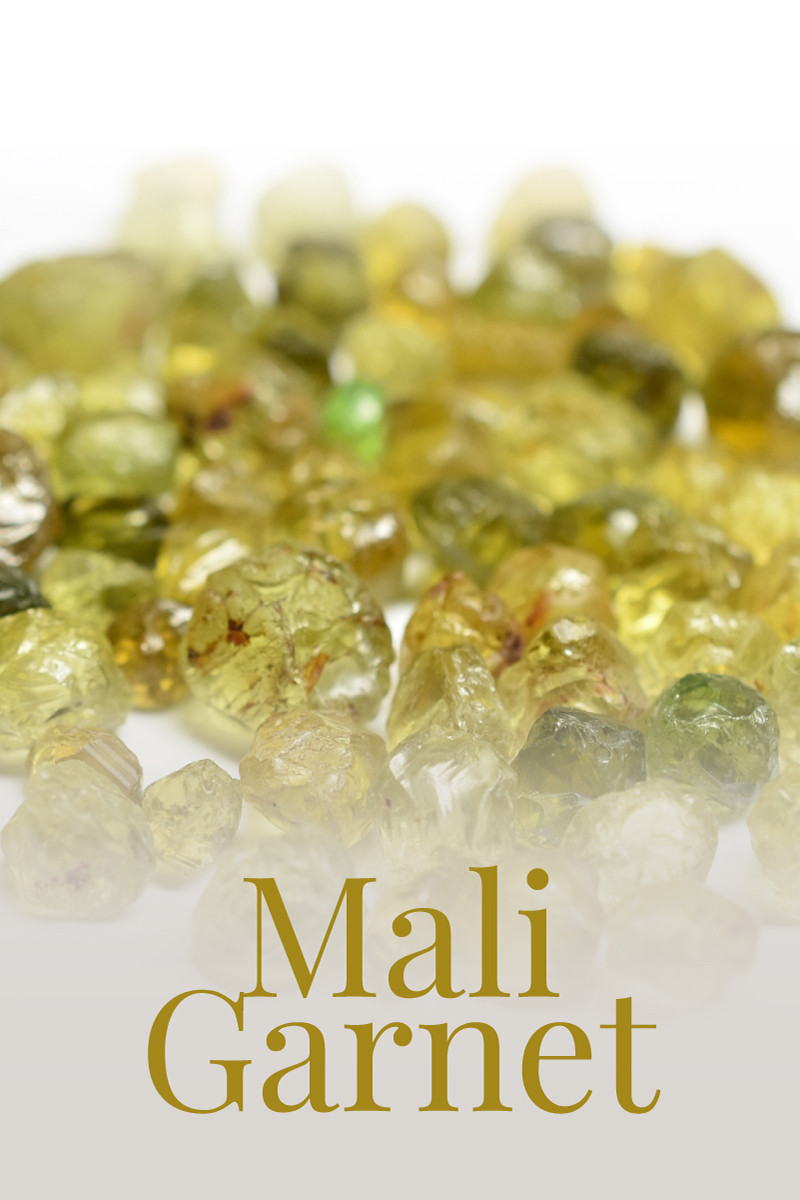 Mali garnet is a variety of the gemstone garnet only found in Mali, West Africa. This type of garnet comes in a few colors but its most renowned hue is a rare chrome-green.
Mali garnet is a variety of the gemstone garnet only found in Mali, West Africa. This type of garnet comes in a few colors but its most renowned hue is a rare chrome-green.
Is Mali garnet rare? Yes, it’s one of the rarer garnet varieties, though not the rarest. If you’re wondering what the rarest type of garnet is, that would be either tsavorite or demantoid.
That doesn’t make Mali garnet any less special, though. Today, we’ll fill you in on all of Mali garnet’s properties, prices, powers, and more!
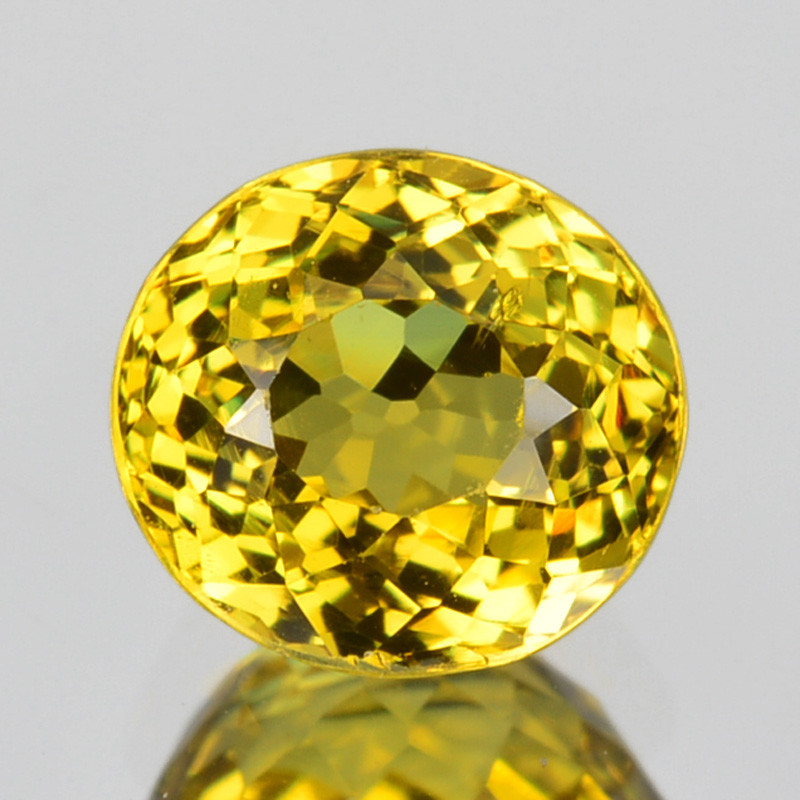
What Is Mali Garnet?
Mali garnet is a semi-precious gemstone in the expansive garnet family. This variety is also called “grandite.” The stone’s color falls within a yellow, green, or brown range.
Many are only familiar with red garnet, so what is green garnet? Green is one of the rarest, most valuable garnet colors. While Mali garnet is sometimes green, attractive green hues in Mali garnet are rare. Other green garnets include uvarovite, demantoid, and tsavorite.
How many colors of garnet are there, then? Of the more than twenty species of garnet currently known, the colors of garnet cover the entire rainbow spectrum, including color-changing and iridescent varieties.
All varieties of garnet, including Mali garnet of course, serve as January birthstones and zodiac stones for both Capricorn and Aquarius. Green garnets traditionally commemorate the 25th wedding anniversary.
Mali Garnet Specifications & Characteristics
The garnet family has multiple varieties, each belonging to a species. The main grouping of species is the pyralspite series: pyrope, almandine, and spessartite. The other grouping is the ugrandite series: uvarovite, grossular, and andradite.
Most garnets are a mixture of two species. Mali garnet is a mixture of grossular (also called grossularite) and andradite. This combination led to the nickname “grandite.”
Each species gives Mali garnet some of its key traits, like a high refractive index and high dispersion (the colorful sparkle nicknamed “fire”) signature to andradites.
Andradite garnets are known for having uncommon colors and the highest dispersion of any garnet species. Both grossular and andradite garnets are rare and sought-after.
The resulting mixture means Mali garnet has a super high refractive index and dispersion, making it sparkle to the heavens.
The mixture isn’t exactly half-and-half, though. Most Mali garnets are 95 percent grossular and 5 percent andradite.
The majority of Mali garnets have a refractive index higher than that of grossular garnets but lower than that of andradite garnets. However, Mali garnets are generally harder and more wearable than andradites.
Below are Mali garnet’s mineral properties listed:
Mohs hardness: 7
Color: Yellow, gold, yellow-green, brown, green
Crystal structure: Cubic/isometric
Luster: Vitreous (glassy) to resinous
Transparency: Translucent to transparent
Refractive index: 1.72-1.75
Density: 3.49-3.85
Cleavage: Indistinct
Fracture: Conchoidal
Streak: White
Luminescence: None
Pleochroism: None
Optical effects: Sometimes color-changing
Dispersion: 0.028-0.057
Now, how does Mali garnet compare to similar garnets?
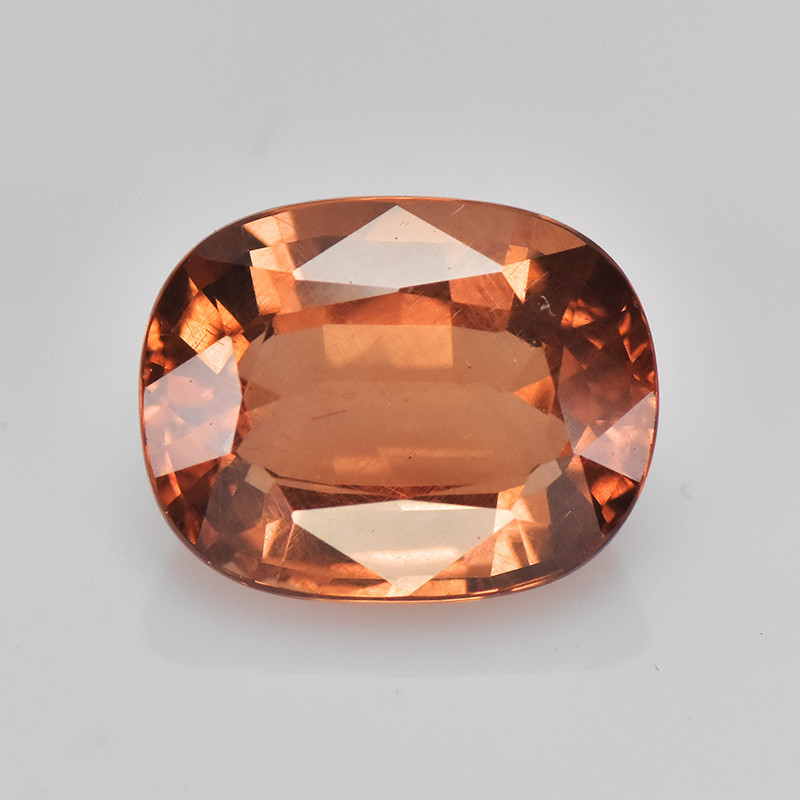 Pictured above: Malaya garnet
Pictured above: Malaya garnet
Mali Garnet vs. Other Garnet Varieties
Mali garnet’s composition is predominantly grossular, a species named after the green hues of the gooseberry, which is grossularia in Latin. Other grossular garnets include hessonite, tsavorite, and hydrogrossular garnet.
Outside of other grossular garnets, one variety you might mix up with Mali garnet is Malaya garnet. We wouldn’t blame you, as they do share some similarities.
Mali Garnet vs. Malaya Garnet
If you confuse Mali garnet with Malaya garnet, don’t worry — it’s a common mistake, and the stones do share some similarities. For one, both are African gemstones named from African words.
In Mali garnet’s case, “Mali” comes from its first (and only) source in Mali, West Africa. Malaya garnet was discovered in Tanzania. Its name (sometimes spelled Malaia) is Swahili for “out of the family” or “outcast” because it didn’t fall into any known garnet categories when it was discovered.
Now, we know Malaya’s composition, which is the first major distinguishing factor from Mali garnet. Malaya garnets are either a mixture of pyrope, almandine, and spessartite or a mixture of pyrope and spessartite. Either way, this puts it in the pyralspite series rather than the ugrandite series that Mali garnet belongs to.
That said, Malaya garnets can have a refractive index and density similar to that of grossular garnets, and some can be slightly grossular in composition.
Another difference is color. Malaya garnets are warmer-toned, commonly displaying reddish-orange, pinkish-orange, or yellow-orange hues. This contrasts Mali garnet’s yellow, green, and brown hues.
With that difference and other mineralogy covered, let’s shift over into Mali garnet’s metaphysical and historical sides.

Mali Garnet Meaning & History
Mali garnets symbolize new beginnings, hope, and connection to Mother Earth. As a garnet, Mali garnets also possess the symbolism of all garnets: friendship, love, and passion.
History
Mali garnet is a newcomer to the garnet family, only discovered in 1994 in Mali, West Africa. Who exactly made the discovery is unclear, but we do know that Mali garnets quickly became popular.
One unique factor to this new garnet was its composition. Discussing the find in the 1995 edition of Gems and Gemology, writers highlighted this fact: “Although garnets of similar composition are relatively well known, this is the first documented occurrence of gem-quality material in commercial quantities.”
Mali garnets were mined heavily in 1995 and grew quickly in demand. This also led to premium prices, though prices wouldn’t stay as high for very long.
The majority of Mali garnets were mined from 1994 to 1999, making up the supply of almost all Mali garnets you’ll see on the market today. Since then, only small amounts are found, making larger-sized Mali garnets rare and highly sought-after.
Of course, you may be seeking out Mali garnet for its healing properties.
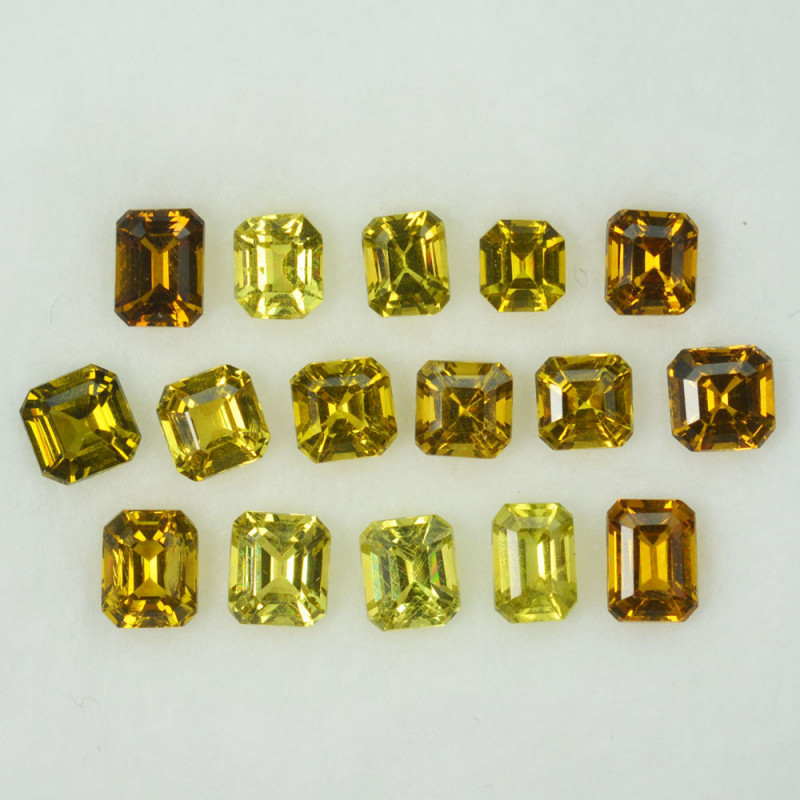
Mali Garnet Healing Properties
Like all gemstones, Mali garnets can be used as healing stones. Yellow Mali garnets join other yellow gemstones in offering greater happiness, intellect, and optimism. Meanwhile, green Mali garnets bring the good luck and joy inherent to green stones.
Lastly, brown Mali garnets, like other brown gems, provide stability, grounding, and comfort.
What about physical, emotional, and chakra healing?
Physical Healing
The purported physical benefits of Mali garnet include treating:
Hemorrhages
Nightmares
Blood poisoning
Liver problems
Heart problems
Onto the emotional side…
Emotional Healing
Emotionally, Mali garnet is believed to benefit those in relationships by increasing intimacy and vulnerability. It’s also said to make you more creative and self-confident.
Other purported benefits of Mali garnet include making life transitions easier, encouraging familial bonding, and bringing peace during chaotic or stressful times.
Chakra Healing
Chakra healing involves balancing one of the energy centers (chakras) along your body to resolve issues relating to a blockage.
Mali garnet is a solar plexus chakra stone, bringing harmony to this center of self-esteem and identity when blockages create feelings of self-doubt or confusion.
Outside of healing, is Mali garnet valuable? It sure is! But each stone’s value depends on its gemstone properties.
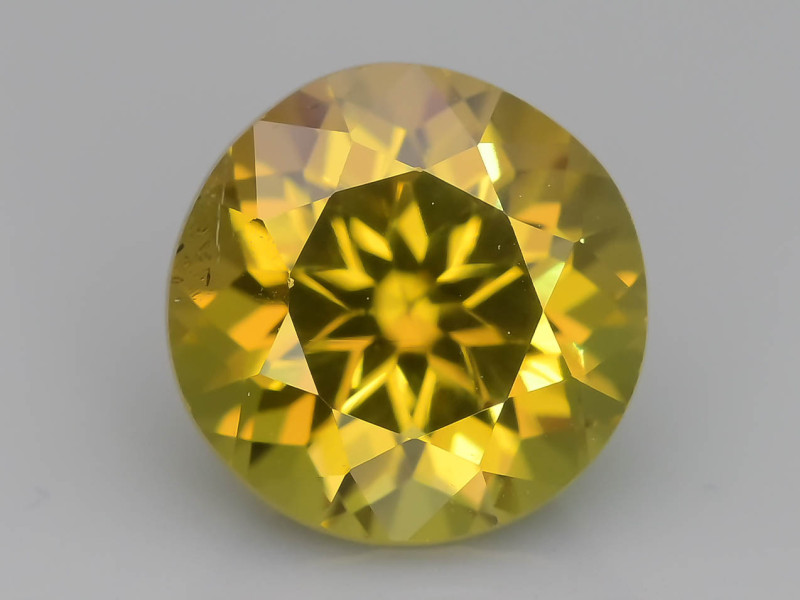
Mali Garnet Gemstone Properties
Experts determine the value of Mali garnet by looking at its color, cut, clarity, and carat weight. Mali garnets are also judged on their dispersion.
Color
Mali garnets can be yellow to green to brown and various hues in between. However, the most valuable Mali garnets are chrome-green, the rarest color. Brownish stones are least valuable.
Another valuable but rare property is when a Mali garnet is color-changing, shifting to different colors under different types of lighting. Under fluorescent lighting, color-changing Mali garnets appear grayish-green. This color shifts to brown under incandescent lighting.
Cut
The majority of gem-quality Mali garnet rough is faceted. Common faceted cuts include cushion, trillion, and oval shapes. Cutting the stone isn’t too difficult, as pleochroism and perfect cleavage aren’t issues.
Faceting Mali garnet is best for showing off this gem’s tremendous color, dispersion, and brilliance, which we’ll discuss more in-depth in a bit.
Low-quality rough may become cabochons, but Mali garnet cabochons are rare. Some rough may be cut into carvings, like the gorgeous octopus carving by Ronald Stevens.
Clarity
Non-red garnets like Mali garnet are often Type II stones, meaning high-quality specimens don’t have visible inclusions to the naked eye, but a few inclusions are expected in lower-quality specimens.
In Mali garnets, you may see tiny crystals or fingerprint inclusions along parallel growth planes. Luckily, most Mali garnet gemstones are eye-clean, meaning they lack visible inclusions to the naked eye.
Carat Weight & Size
Since most of the Mali garnet supply was mined in the 1990s, large-sized rough specimens are few and far between. Therefore, larger gems can have higher price-per-carat rates.
Almost all faceted Mali garnet gemstones currently available are under 3 carats, with most being 1 carat or lower.
Dispersion
Lastly, one of the not-as-standard value factors for Mali garnets is dispersion. Dispersion, or fire, describes a gem’s multi-colored sparkle, in contrast to the white light reflected called brilliance. That said, Mali garnets have a high refractive index, giving them great brilliance as well.
Dispersion is important to Mali garnet because the gem has the potential for very high dispersion, similar to that of demantoid garnet. Grossular garnets have a dispersion of 0.027, while andradite garnets have a dispersion of 0.057. Therefore, Mali garnets can range between these two values.
Mali garnets with the highest dispersion carry the highest value. Plus, dispersion and brilliance is best seen with lighter-colored material.
Before they’re cut to sparkle, how does Mali garnet form?

Mali Garnet Formation & Sources
Mali garnet forms like most garnets. When sedimentary rocks go deep underground, heat and pressure cause metamorphism, changing the minerals inside the rocks.
Miners typically find Mali garnet inside two types of deposits: secondary or alluvial.
Secondary deposits contain primary minerals that have changed into new, secondary minerals because of external conditions like weathering. Alluvial deposits are places where minerals have been carried by a stream or river, landing where the stream of water slows down.
Where is the best Mali garnet from? Mali, specifically the Kayes region, remains the best and only known source of Mali garnets.

Mali Garnet Price & Value
Mali garnet’s rarity means faceted gems are somewhat pricey, though the range is pretty broad. So, how much does a 1-carat Mali garnet cost?
Faceted Mali garnet price per carat is between $75-$1500 per carat at retail. Wholesale prices for Mali garnet range from $25 to $1,500 total. The priciest Mali garnet gems are those with chrome-green coloring, eye-clean clarity, and large carat weights.
Color-changing Mali garnets weighing 0.5-1 carat go for $80-$2,500 per carat, while those weighing 1-6 carats fetch $120-$6,000 per carat.
How much are raw Mali garnets worth? Rough Mali garnet specimens are much more affordable, ranging from $0.50-$5 per carat at wholesale.
Before we wrap up, we’ll give you some tips on proper gemstone care for Mali garnet.
Mali Garnet Care and Maintenance
Mali garnets have good toughness, stability, and hardness, making them suitable for virtually any cut and jewelry style. You may want to opt for protective settings with a Mali garnet ring or bracelet, though.
You can clean Mali garnet with a soft toothbrush or cloth dipped into a mixture of mild soap and warm water. Gently wipe down the stone, then rinse away soap residue. Lastly, dry it with a soft, microfiber cloth.
Keep Mali garnet away from extreme heat, sudden temperature changes, and harsh chemicals like hydrofluoric acid or bleach. Also avoid cleaning Mali garnet with mechanical devices like ultrasonic or steam cleaners.

Mesmerized by Mali Garnet?
For those wondering what the best-quality garnet is, there’s no set answer; each variety brings its own charm and special properties. Mali garnets are a rare and beautiful find, fitting for anyone similarly unique who wants to break the mold of standard red garnets.
Search the Gemstone Encyclopedia
Related Auctions
Related Articles
Originally the Birthstones or gemstones were associated with a zodiac sign or the month of a individuals birth. Find out what your stone is and view the stones we have for sale
8th Feb 2021
There are dozens of quartz and chalcedony gems with various colors and patterns. Learn all about quartz properties and every type of quartz, from amethyst and agate to plasma and phantom quartz!
15th Oct 2020
Hackmanite is a pink to violet sodalite gem known for its unique color-change and luminescence. Learn why hackmanite is special, from its rare qualities to the types of hackmanite jewelry available.
28th Mar 2018
Latest Articles
Shortite is a rare mineral and rarer gemstone, usually found as colorless or yellow wedge-shaped crystals. Learn the value, history, and properties of shortite in this guide!
9th Dec 2024
Senarmontite is an uncommon antimony mineral mostly used industrially but occasionally collected as rare gems or pearly crystals. Find out all of the traits, uses, prices, and history of senarmontite.
27th Nov 2024
Tantalite is a group of red, brown, or black minerals containing the rare and valuable element tantalum. Discover the uses, history, prices, and properties of tantalite gemstones in this guide!
11th Nov 2024
Article Categories
How To's is where you will find helpful articles from gem Rock Auctions on how to cut gemstones, select gemstones and buy gemstones.
9 Articles







